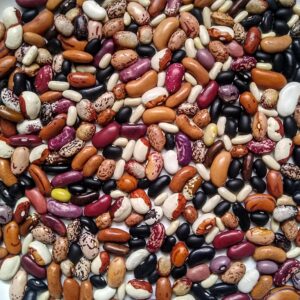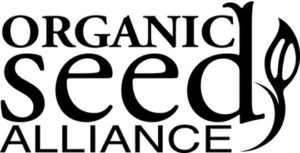
 The following article is a response to a New York Times opinion piece published on December 15, 2011, titled: “Nepal and Others Mull Monsanto’s Role in Advancing Agriculture.”
The following article is a response to a New York Times opinion piece published on December 15, 2011, titled: “Nepal and Others Mull Monsanto’s Role in Advancing Agriculture.”
Misinformation and polarized views on seed seem to flood the media these days, as evidenced by Andrew Revkin’s blog post. I think we all agree, however, that seed is essential to life, now and in the future.
There are a few topics highlighted in this blog post that demand a deeper examination. First, what are the relative benefits of hybrid seed versus open-pollinated (OP) seed? Second, what are the reasons the Nepalese government would encourage or discourage hybrid seed instead of OP seed in Nepal?
Pamela Ronald states, “Hybrid seed yield more and require less pesticides (because they carry robust traits for resistance to pests and disease) as compared to open-pollinated seed.” This is a strong statement, but as a generalization, we would agree that in many cross-pollinated crops like corn, a comparison of currently available hybrid and OP varieties would show hybrids more often than not superior. However, this is not a fair contest when hybrid breeding is being compared to “no breeding at all,” as Richard Lewontin, Harvard geneticist, puts it, referring to the fact that there has been little or no active breeding of OP varieties in many commercially valuable crops in a half century. Most good plant geneticists realize that it is possible to put these “robust traits for resistance to pests and disease” into non-hybrid crop varieties.
Production of hybrid varieties became the preeminent breeding methodology for a number of commercial seed crops during the second half of the 20th century for essentially two reasons: 1) from the breeder’s perspective it was a faster way of both isolating and combining important traits into a single variety, and 2) from the seed company’s perspective it is a biological method that ensures intellectual property protection (through control of the parental inbred lines). Since it was developed, the lion’s share of breeding has been done using the inbred-hybrid breeding technique. But does that mean it’s better? North Dakota State University corn breeder Frank Kutka recently examined that question in his peer reviewed paper, “Open-Pollinated vs. Hybrid Maize Cultivars,” and found that, if equivalent breeding resources had been provided, it’s likely that OP cultivars would yield just as much as hybrids (see: http://www.mdpi.com/2071-1050/3/9/1531/).
Raoul Adamchak contends there are no OP sweet corn varieties that even remotely compare to the hybrid variety he routinely purchases. “I think of OP varieties as ‘cow corn,’” he says, “tough, chewy, lots of corn flavor, and little sweetness. No, I can’t save seed from ‘Vision,’ but I wouldn’t want to save seed from the OP variety.”
Contrary to this, a team consisting of Bill Tracy, sweet corn geneticist at the University of Wisconsin, long-time Minnesota organic sweet corn grower Martin Diffley, and Organic Seed Alliance, are developing an OP sweet corn variety that is already getting high marks for sweetness and tenderness in trials. Once released (most likely in three years), this variety bred through a participatory model, will be as good, if not better, than any hybrid sweet corn on the market. It is also being bred to retain a reasonable amount of genetic variation for many of the most important traits while being uniform enough for the marketplace. This built in genetic resiliency will allow any farmer to further select and adapt it to their local conditions.
The beauty of an OP variety like this new sweet corn is that farmers will be able to save the seed and adapt this variety to their own farm and climate. (Mr. Adamchak may even want to adapt it to his organic farm’s unique conditions in California.) In other words, farmers maintain control over their seed. In doing so, they have the ability to build genetic variability that allows adaptability to our changing climate and other environmental and agronomic conditions. These farmers also help protect biologically diverse seed for future generations simply by managing this living resource.
Mr. Adamchak makes the statement that “farmers should be at the table.” We couldn’t agree more. That’s why Organic Seed Alliance engages in participatory plant breeding projects that honor the roles of both farmers and plant breeders. We emphasize keeping genetic variability and resilience in the varieties we work on. Together, farmers and breeders across the globe are developing regionally adapted seed appropriate for organic and low-input farming systems through participatory breeding.
For all these reasons, it’s critical to encourage the use and improvement of non-hybrid seed, especially in communities that rely on subsistence agriculture. Our position is inconsistent with Mr. Adamchak’s, who asserts, “To insist that growers in Nepal only grow OP corn is to insist that they remain poor, subsistence farmers.” This is a frivolous statement given the genuine opportunity that OP seed development provides farmers and the communities they feed. It’s quite simple: OP varieties can provide comparable yields and other beneficial traits when given enough attention and investments, and allow for greater genetic variability that is necessary for meeting food security now and into the future.
John Navazio, Jared Zystro, and Kristina Hubbard
